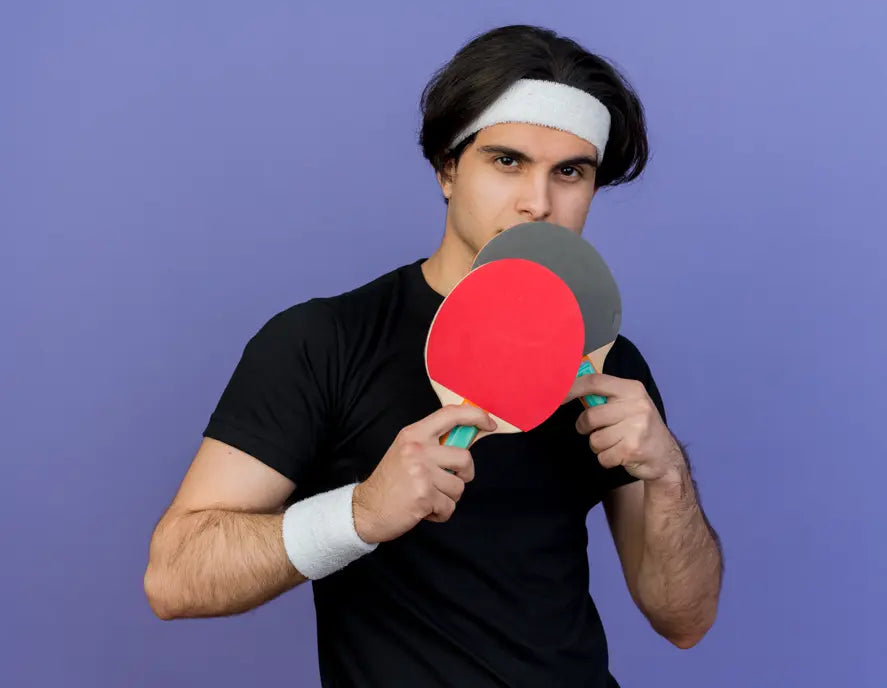How to Choose a Defensive Ping Pong Paddle: Features & Buyer’s Guide

Choosing the suitable defensive ping pong paddle can make a huge impact in your game, especially if your style relies on control, spin, and returning aggressive shots with precision. Whether you're a modern defender using long pips to attack back or a classic chopper who holds control of the pace, understanding a defensive paddle is essential. In this guide, we’ll understand what features to consider in a defensive paddle and how to choose the one that matches your style.
What Is a Defensive Ping Pong Paddle?
In the world of table tennis, a person owning a defensive paddle is considered a very controlled player. The defensive paddle is designed to reduce speed, enhance control, and add spinning capabilities. Being controlled players, defensive players consider placement and variation more important than raw power. Comparatively, these paddles are slower than offensive blades but offer exceptional feel and precision when handling. The goal is to force errors from your opponent by returning shots with disruptive spin or by making it difficult for them to attack effectively.
Key Features to Look for in a Defensive Paddle
Blade Type and Speed Rating
The blade is the foundation of your paddle. Defensive blades typically fall into the DEF or ALL (all-round) speed categories.
-
DEF blades: Slower, optimized for heavy chops and controlled returns. Ideal for classic defenders.
-
ALL blades: Slightly faster, offering a balance between defense and occasional counterattacks.
Look for blades constructed with softwood plies, which absorb the ball's energy, resulting in an increase in dwell time and allowing you to generate strategic spins and precise placements.
Check our range of Defensive table tennis blades for control and medium speed
Rubber Type: Pips-in vs Pips-out
Rubbers are the first point of contact interacting with the ball. Defensive players often make use of different rubbers on each side for tactical gameplay.
Long Pips (Pips-out)
Long pips rubbers are designed to reverse back your opponent’s spin and disrupt their rhythm. They are especially effective for chopping away from the table.
-
Pros: Disrupts spin, ideal for chopping.
-
Cons: Less control on offensive strokes.
Short Pips (Pips-out)
Better for blocking and occasional counterattacking close to the table. Less disruptive than long pips but easier to control.
Inverted Rubbers (Pips-in)
The perfect choice for defenders who like to add their own spin and attack when the right opportunity is identified. Look for thin sponge (1.0 mm–1.5 mm) versions to maintain control.
Sponge Thickness
Sponge thickness affects speed and spin. For defensive play:
-
Thin sponge (0.5mm–1.5mm): Offers more control, better for chopping and passive blocking.
-
Medium sponge (1.5 mm–1.8 mm): Suitable for all-round defensive players who occasionally attack.
Avoid thick sponge (over 2.0 mm) unless you prefer a hybrid defensive-offensive style.
Handle Type
While there is no performance disruption with a handle, playing in a comfortable setup is important for responsiveness and consistency.
-
Flared handle: Best for players who favor forehand strokes.
-
Straight handle: Ideal for those who switch between forehand and backhand often.
-
Anatomic handle: Offers more palm support, suitable for stable grips.
Choose based on what feels natural during play. Defensive players often lean toward straight handles for versatility. If you are still confused about which handle to choose, check our guide on the difference between different handle types and how to choose the perfect handle type.
Tips for Buying a Defensive Paddle
Match Paddle to Your Defensive Style
-
Classic chopper: Look for slow blade + long pips + thin sponge.
-
Modern defender: Choose an all-round blade + mixed rubbers (long pips + inverted).
-
Close-to-table blocker: Use short pips on backhand with a medium-speed blade.
Consider Pre-Made vs Custom Setup
-
Pre-made paddles are convenient but usually not tailored for high-level defensive play.
-
Custom paddles allow you to choose blade and rubber combinations based on your unique strategy.
Don’t Chase Speed
Speed is the enemy of control for defenders. Stick to equipment that allows you to return hard attacks, place the ball precisely, and vary spin effectively.
Final Thoughts
Choosing the right defensive ping pong paddle isn’t just about slowing the gameplay pace—it’s about achieving immense control and constantly putting your opponent into uncomfortable situations. Focus on slower blades, rubbers with unique spin characteristics, and configurations that complement your style.
Before making a purchase, consider trying a few setups at your local club or consulting with a coach. Once you find the right combination, your defensive game will become more consistent, deceptive, and effective



